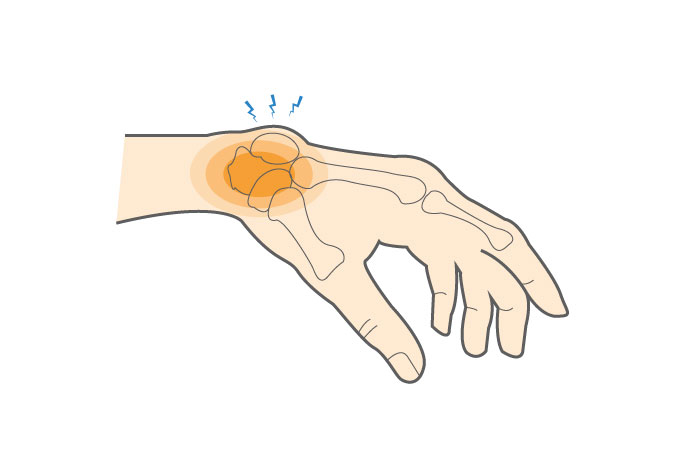Ganglion cysts are common, typically harmless lumps or masses that most often develop on the back of the wrist, but can occur on the front as well. Ganglion cysts may also occur near tendons and joints of the fingers, ankles, or feet.
These fluid-filled lumps are always benign (noncancerous) and develop just below the skin. They can appear and disappear quickly and may change size; a ganglion cyst can be as small as a pea or as large as a ping-pong ball.
Ganglion cysts often go away on their own. However, if your cyst is painful, interfering with your ability to move the affected joint, or has an unsightly appearance, both non-operative and operative treatments are available.


